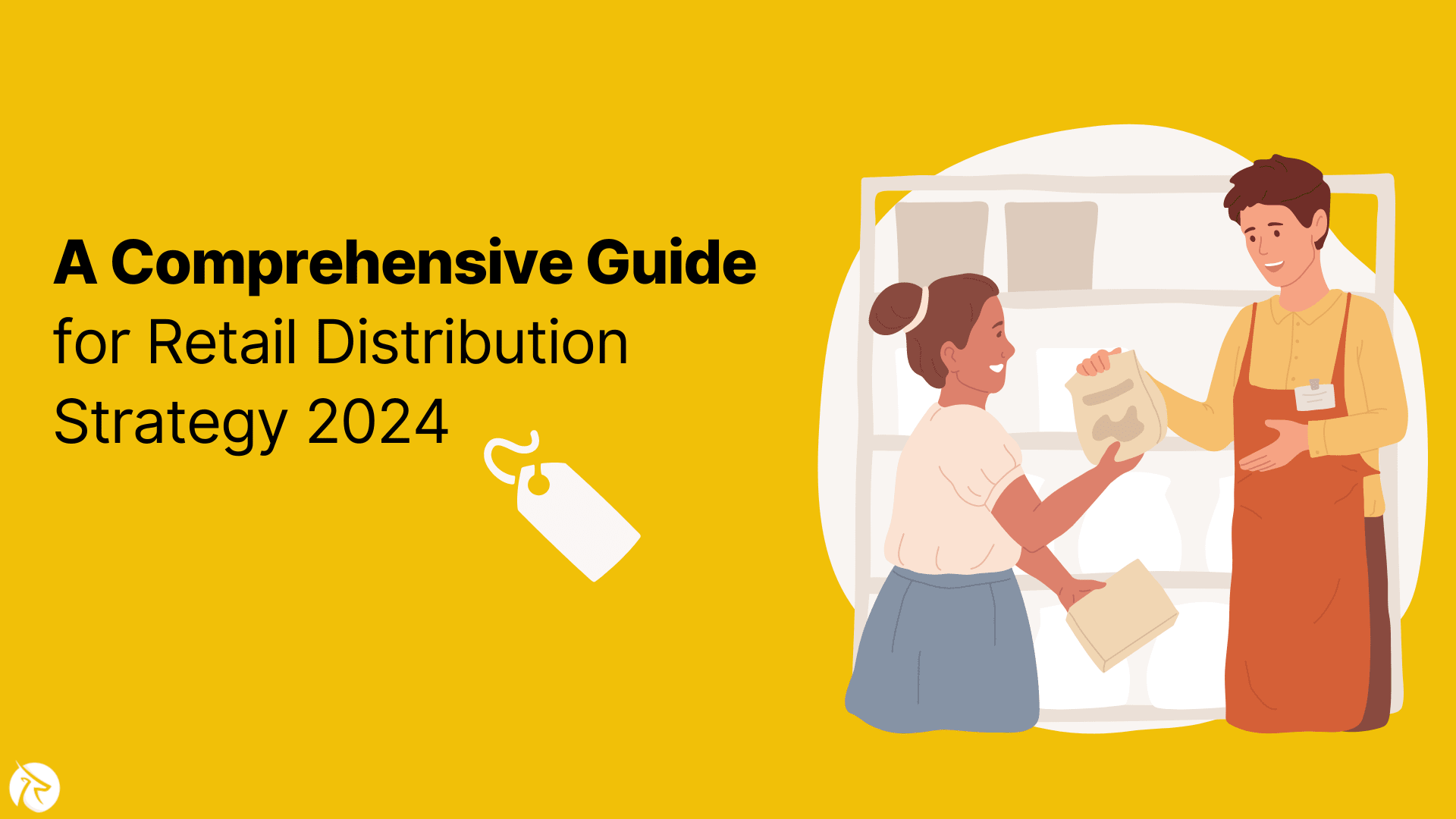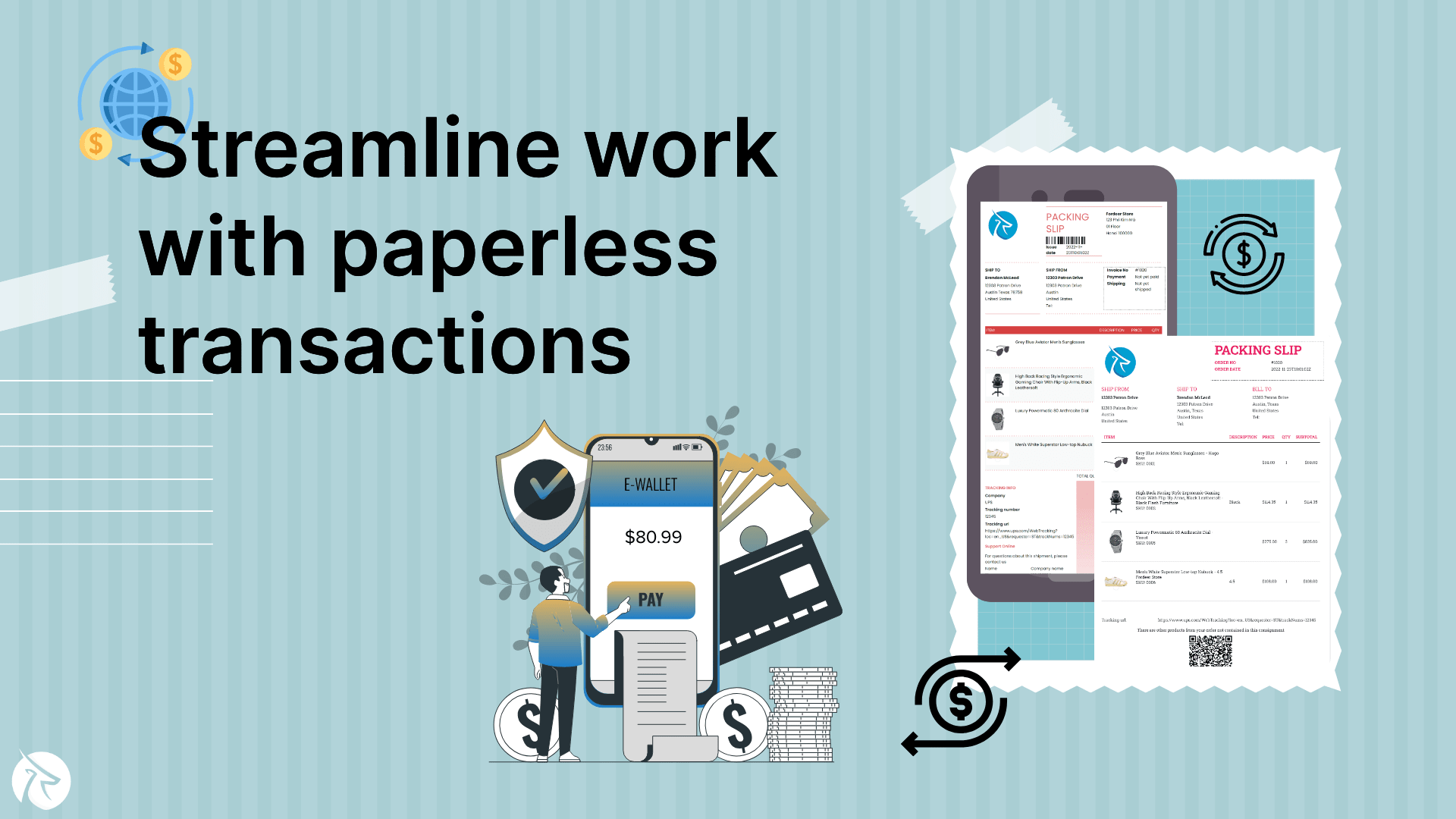A Comprehensive Guide for Retail Distribution Strategy 2024

As we step into 2024, businesses must reassess and refine their retail distribution strategies. This comprehensive guide from Fordeer will walk you through the key elements and trends shaping retail distribution in 2024, offering valuable insights to enhance your approach and drive sustainable growth.
Understanding Retail Distribution
Definition of retail distribution strategy
Retail distribution encompasses the journey of products from manufacturers or producers to their ultimate destination—the hands of the final customers for consumption or use.
A retail distribution strategy involves the seamless movement of goods from manufacturers to sellers or directly to customers (D2C) through a fulfillment channel. This journey typically involves various intermediaries, including wholesalers, vendors, retailers, or, in the case of dropshipping, direct delivery from manufacturers to buyers without going through traditional stores or selling platforms.

Key players in this process include manufacturers, wholesalers, retailers, agents, and others. Selecting the right retail distribution plan is pivotal for a successful distribution process, increased revenue, and fostering enduring client loyalty.
The key players in a retail distribution strategy
Your retail distribution strategy involves 5 main players:
- The manufacturer: This is the creative force behind the inventory set for distribution.
- The agent: In certain cases, instead of engaging directly with wholesalers, manufacturers enlist agents to handle the sale of products to wholesalers on their behalf.
- The wholesaler: Serving as the intermediary, wholesalers sell a manufacturer's products to retailers and, in some instances, directly to customers.
- The retailer: Retailers are the go-to source for customers seeking to purchase goods, whether online or in-store. Distribution strategies may involve multiple retailers.
- The customer: Customers acquire goods from retailers, but depending on the strategy, they might also engage in direct-to-consumer sales by purchasing directly from the manufacturer.
You can find out more about their differences here!
The importance of choosing the right retail distribution strategy
Selecting the appropriate retail distribution strategy holds paramount importance for the overall success and efficiency of a business. The right strategy can significantly impact various aspects of operations, influencing the bottom line and customer satisfaction.
A well-chosen distribution strategy streamlines the movement of products from manufacturers to end consumers. This efficiency minimizes delays, reduces costs, and ensures that products reach their destination on time.
By carefully selecting a distribution strategy, you can ensure that products are available when and where customers need them. This timely availability enhances customer satisfaction, as consumers can rely on the brand to deliver consistent and convenient access to their desired products.

An effective distribution strategy aids in managing inventory levels efficiently. By aligning supply with demand, businesses can prevent overstocking or stockouts, reducing carrying costs and the risk of lost sales opportunities.
Last but not least, choosing the right distribution strategy can serve as a competitive differentiator. It allows a business to stand out in the market by offering superior delivery options, personalized services, or unique distribution channels that competitors may not have.
Types of Retail Distribution
Intensive retail distribution
Businesses employ this retail distribution technique to effectively showcase the availability of their products, aiming to reach a broad market audience. Brands achieve this objective by distributing their goods across a multitude of eCommerce retailers and various outlets. Retailers specializing in convenience goods, in particular, are inclined towards adopting intensive retail distribution.
Advantages of intensive retail distribution
- Boosts product awareness: This approach significantly increases the visibility of products, ensuring that a larger audience becomes aware of their availability in the market.
- Encourages impulse buying: The widespread presence of products in diverse retail outlets can prompt impulse buying behavior among consumers, as they come across the items during routine shopping.
- Enhances revenue: By maximizing accessibility and availability, businesses can tap into a larger customer base, ultimately leading to increased sales and revenue generation.
Selective retail distribution
Selective retail distribution occupies a middle ground between intensive and exclusive retail distribution. In this approach, products are dispersed across various locations, although it is employed less frequently in comparison to intensive retail distribution.
Advantages of selective retail distribution
- Ensures good market coverage: This strategy allows for a balanced market presence, ensuring that products are available in a variety of outlets without saturating the market.
- Offers more control: Selective distribution provides brands with greater control over where their products are sold, allowing them to maintain a carefully curated image and brand positioning.
- Boosts customer satisfaction: By strategically choosing outlets, brands can enhance the overall shopping experience for customers, aligning with their expectations and reinforcing the brand's premium positioning in the market.
Exclusive retail distribution
Exclusive retail distribution stands apart from intensive retail distribution, taking a unique approach in which specific distributors are instructed to exclusively sell products in predetermined locations. This distribution strategy is commonly adopted by companies specializing in expensive, high-end goods, as it aligns with the brand's prestigious image. The primary goal is to target a well-defined niche market with the financial capacity to purchase the product.
Advantages of exclusive retail distribution
- Keeps the firm focused: Exclusive distribution helps maintain a concentrated and targeted market presence, allowing the company to focus on specific locations and effectively cater to the needs of its niche audience.
- Secures the manufacturer’s finances: By carefully controlling the distribution channels, the manufacturer can ensure that their high-end products are sold in environments that enhance the brand's image, ultimately safeguarding the financial interests of the company.
- Facilitates localization: This strategy supports localization efforts, enabling the brand to tailor its offerings and messaging to the specific preferences and characteristics of the chosen locations, thereby enhancing customer relevance and engagement.
Factors to consider when choosing the right retail distribution strategy in 2024
Product type
The nature of your products, encompassing factors such as perishability, size, weight, and fragility, significantly influences the choice of store distribution channels.
Consider fresh produce like vegetables and meat; their rapid delivery to customers is imperative for maintaining quality and freshness. In such cases, direct channels prove advantageous, reducing delays and handling to ensure a swift and efficient supply chain. Similarly, for bulkier and more fragile items, opting for a concise distribution channel is advisable to minimize potential damages during transportation.

Conversely, merchandise like apparel and clothing may find greater success through retailers. Retail outlets often offer a diverse product assortment along with additional services, providing customers with a comprehensive shopping experience and thereby increasing sales opportunities. This approach allows for a synergistic relationship between product presentation and customer satisfaction.
In a broader sense, purchases can be categorized into routine, limited, and extensive products, each demanding a tailored approach.
Routine purchases
These are everyday items that are inexpensive and often bought without much deliberation. Examples include toothpaste and batteries.
Given their replaceable nature and consumers' tendency to switch brands when a preferred one is unavailable, an elaborate retail distribution strategy is recommended. Widely available and easily accessible products enhance the likelihood of purchase, as brand loyalty is not a significant factor.
Limited purchases
Falling between routine and extensive purchases, limited purchase items, such as mobile phones, washing machines, and refrigerators, are characterized by fair prices. Consumers invest more time researching and comparing options before making a decision. For these goods, a selective or intensive retail distribution strategy proves effective, offering customers diverse options while considering pricing and utility.
Extensive purchases
Extensive purchases involve high-risk items like homes, auto insurance, and schooling, with the intensity of the buying decision increasing with the item's price. For such goods, an exclusive distribution strategy can be beneficial, as it allows clients to perceive the value of the product or service. Some brands even produce fewer units of these expensive goods to enhance their perceived value and elevate the overall price.
Customer demand based on location
Ensuring your inventory is in close proximity to your customers emerges as a highly effective strategy for optimizing distribution and fulfillment, irrespective of your chosen retail distribution approach. This involves strategically placing your products in various distribution hubs based on past demand patterns.
In instances where demand is robust in one region but subdued in another, it becomes crucial to dispatch fresh orders from distribution centers experiencing lower demand but possessing surplus inventory. This proactive measure helps avert stockouts in high-demand locations.

However, the downside to relying on long shipping routes to cater to high-demand areas is the resultant slowdown in the supply chain and increased shipping costs. An alternative and more efficient approach involves strategically relocating inventory to distribution hubs aligned with high demand. By doing so, not only can you expedite the delivery process, but you can also minimize shipping expenses.
Moreover, recognizing retailers who excel at selling your products by providing them with a larger inventory can be instrumental in preventing stockouts and maximizing sales opportunities. This collaborative approach ensures that successful retailers have ample stock to meet customer demand, fostering a positive customer experience and sustaining the momentum of successful sales.
Inefficiencies of distribution strategies
Retail distribution involves a myriad of dynamic elements, making it inevitable that operational inefficiencies may arise. Regularly reviewing your distribution strategy is crucial to identifying and addressing any ineffective procedures.
When relying on multiple partners to manage different aspects of your distribution process—such as a partner for retail warehousing, another for fulfillment, and a third for last-mile delivery—a disruption in any one partner's regular operations can cause delays in the entire supply chain, significantly impacting your bottom line.
Rather than depending on a single partner to oversee all processes, involving various individuals can help streamline and simplify procedures. Conducting an audit is essential to identify opportunities for cost reduction. Identify the most expensive distribution steps and explore alternatives that may be more cost-effective.
Distribution efficiency can be improved by opting for fulfillment services over a single central hub, as this approach speeds up deliveries while substantially reducing freight expenses. Additionally, a thorough audit may reveal obstacles in the distribution process. For instance, a poorly organized warehouse may impede pickers, slowing down distribution and fulfillment procedures. Recognizing such issues allows for targeted improvements and the implementation of solutions to address bottlenecks in the distribution process.
Over to you,
In conclusion, the retail distribution landscape is undergoing significant transformations in 2024. By understanding the roles of key players, leveraging technology, embracing e-commerce trends, prioritizing sustainability, and adapting to changing consumer behaviors, businesses can position themselves for success in the competitive retail market.
Fordeer Team hopes that this guide serves as a roadmap to help you navigate the complexities of retail distribution, ensuring your strategy is not only effective but also future-proof!
For more invaluable information, stay updated with Fordeer Team!
- Install Fordeer Apps for Free
- Get immediate assistance by chatting with us.
- Join Fordeer Commerce Community for fresh app updates, expert tips, and private deals.











